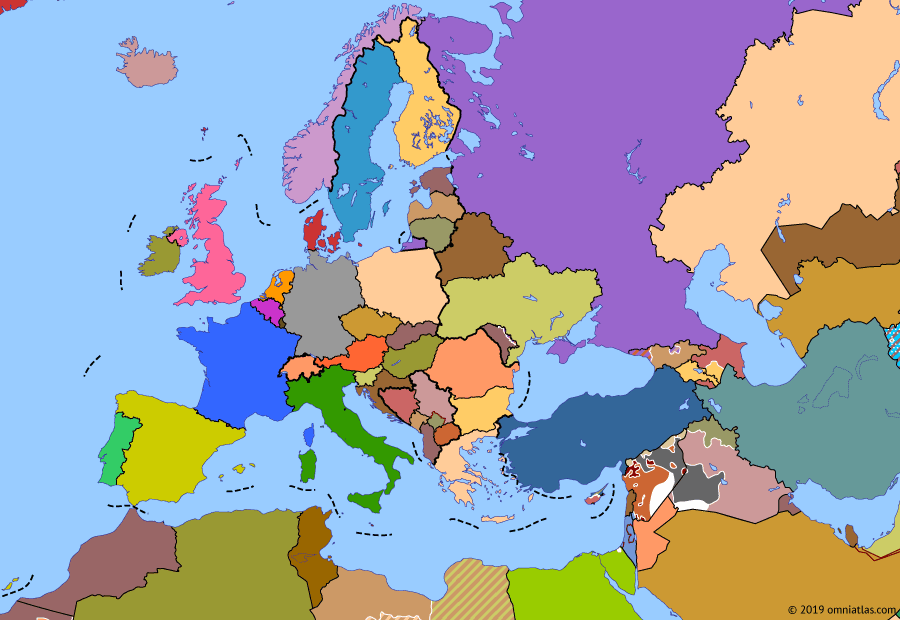Europe 2014: Crimean Crisis
18 March 2014
18 Mar 2014
Crisis of Europe
-27–68 Julio-Claudian Dynasty
68–96 Flavian Dynasty
96–192 Nerva–Antonine Dynasty
192–235 Severan Dynasty
235–268 Crisis of the Third Century: Turmoil
268–284 Crisis of the Third Century: Restoration
284–311 Diocletian and the Tetrarchy
311–363 Constantinian Dynasty
363–383 Valentinianic Dynasty
383–408 Theodosian Dynasty: Divided Empire
408–425 Theodosian Dynasty: The West Besieged
425–441 Theodosian Dynasty: Fall of Africa
441–457 Theodosian Dynasty: Hunnic Wars
457–1803 NO MAPS FOR THIS PERIOD YET
1803–1814 Napoleonic Wars
1814–1815 Vienna and Waterloo
1815–1848 Congress Europe
1848–1850 Springtime of Peoples
1850–1859 Crimean War
1859–1862 Italian Unification
1862–1871 German Unification
1871–1914 Imperial Europe
1914–1918 Great War
1918–1922 Armistice Europe
1922–1939 Rise of Fascism
1939–1942 World War II: Blitzkrieg
1942–1945 World War II: Fall of the Third Reich
1945–1990 Cold War
1990–2010 Post-Cold War Europe
2010–pres Crisis of Europe
Crimean Crisis
19 Mar 2011 Eurozone Crisis
18 Mar 2014 Crimean Crisis
23 May 2014 Donbass Rebellion
17 Jul 2014 Rise of Daesh
7 Oct 2015 Syrian Civil War
27 Oct 2017 Return of Nationalism
31 Jan 2020 Brexit
22 Mar 2022 Russian invasion of Ukraine
16 Jan 2023 Battle of Bakhmut
24 Jun 2023 Wagner Group rebellion
15 Jan 2024 Europe Today
The Eurozone crisis had only partially subsided by 2014, when a pro-European revolution toppled the pro-Russian government of Ukraine. Russia responded by massing troops on the Ukrainian border and supporting the accession of the Ukrainian republic of Crimea to the Russian Federation. The US and its allies moved to support Ukraine by imposing sanctions on Russia.
